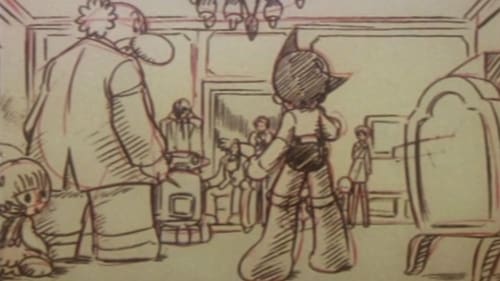
Art Direction
Osamu Tezuka is going to a 21st Century new year's party with all the characters he made. One thing leads to another and he ends up missing! It's up to his most popular characters to find out what happened to him and get him back safely before the rest of the guests show up.

Director
World famous surgeon Black Jack meets a family with a strange predicament...their grandma is constantly demanding money. They struggle to deal with this beligerent elderly woman whose motives are shrouded in mystery. But when her medical problems come into play, Black Jack and his adoptive daughter-slash-assistant Pinoko are ready to operate!

Art Direction
Black Jack is approached by a defecting soldier and his wife with a plea to help their son, who is afflicted with a rare disease. Although it might already be too late for the boy, Black Jack is able to save the child. But at what cost?

Art Direction

Art Direction
The story follows a girl who works on a streetcar both before and after the bomb drops on Hiroshima.

Art Direction
A fortuneteller tells Hidari Taisho that he must hunt down 1000 foxes in order to conquer the country. So Akuemon, who is disliked by everybody, is hired to do the foxhunting. In response, the foxes send a female fox to Akuemon's house disguised as his wife. A story unfolds between Akuemon, who has never loved anyone, and the female fox, who slowly discovers true love in him even while tormented by sorrow over her comrades' death. This is the 6th work in "The Lion Books" series. It is also the first attempt by visualist Tezuka Makoto, Tezuka's older son, to render an original of his father's into an animated version.

Art Direction
とある港町では、近く行われるダンス・クィーンコンテストの話題でもちきりだった。未だ11歳のミホは、デザイナー志望で、コンテストには出られなくても、コンテスト用のドレスに夢中だ。実はミホの家の屋根裏部屋には、夢の国「ファンランド」から来た妖精ピグとモグが隠れ棲んでいるのだ。

Original Music Composer
Film about the Ashio Copper Mine Incident and Shozo Tanaka.

Original Music Composer
Love story of a working-class boy and girl.

Music
An early experimental film by Toshio Matsumoto. Produced as part of the student riots in Japan at the start of the 1960s, Matsumoto uses collage, archival footage, and impassioned narration to create an expressive, visceral criticism of the US-Japan Security Treaty.





